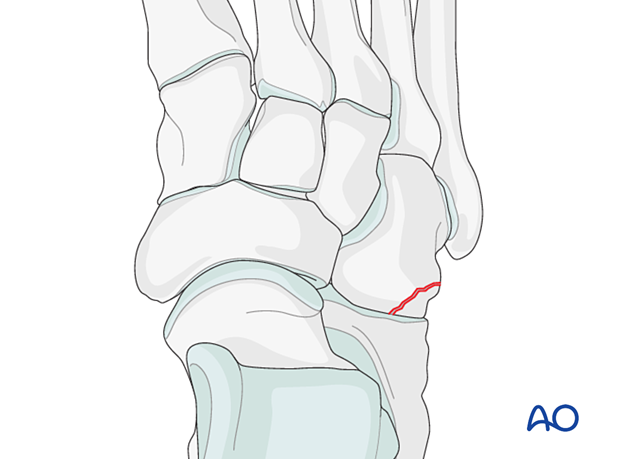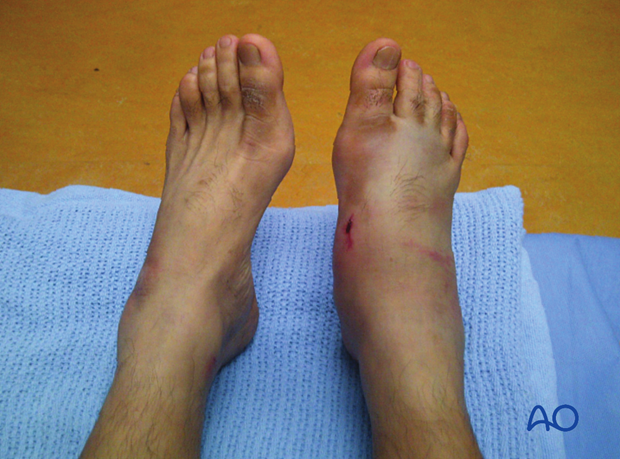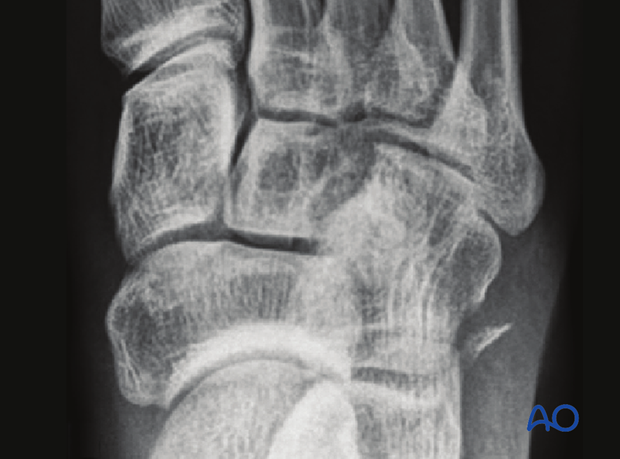Cuboid avulsion fracture
Definition
Avulsion fractures of the cuboid are classified by the AO/OTA as 84A fractures.
84A fractures are the most common cuboid fracture.

Clinical presentation
There is swelling, bruising, and point tenderness at the dorsolateral aspect of the foot.
The patient will most often be unwilling to walk and put weight on the lateral aspect of the foot.
Isolated avulsion fractures are, as a rule, not associated with any deformity.

Images
This imag shows a dorsal avulsion fracture of the cuboid.

Mechanism of injury
These fractures are low-energy injuries due to twisting the foot with inversion of the hindfoot and adduction of the forefoot.
Associated injuries
This injury may be part of a Lisfranc or Chopart injury, in which case there may also be bruising at the plantar aspect and medial pain. When avulsion fracture is identified, a high suspicion index is needed to exclude Lisfranc and Chopart injuries.













